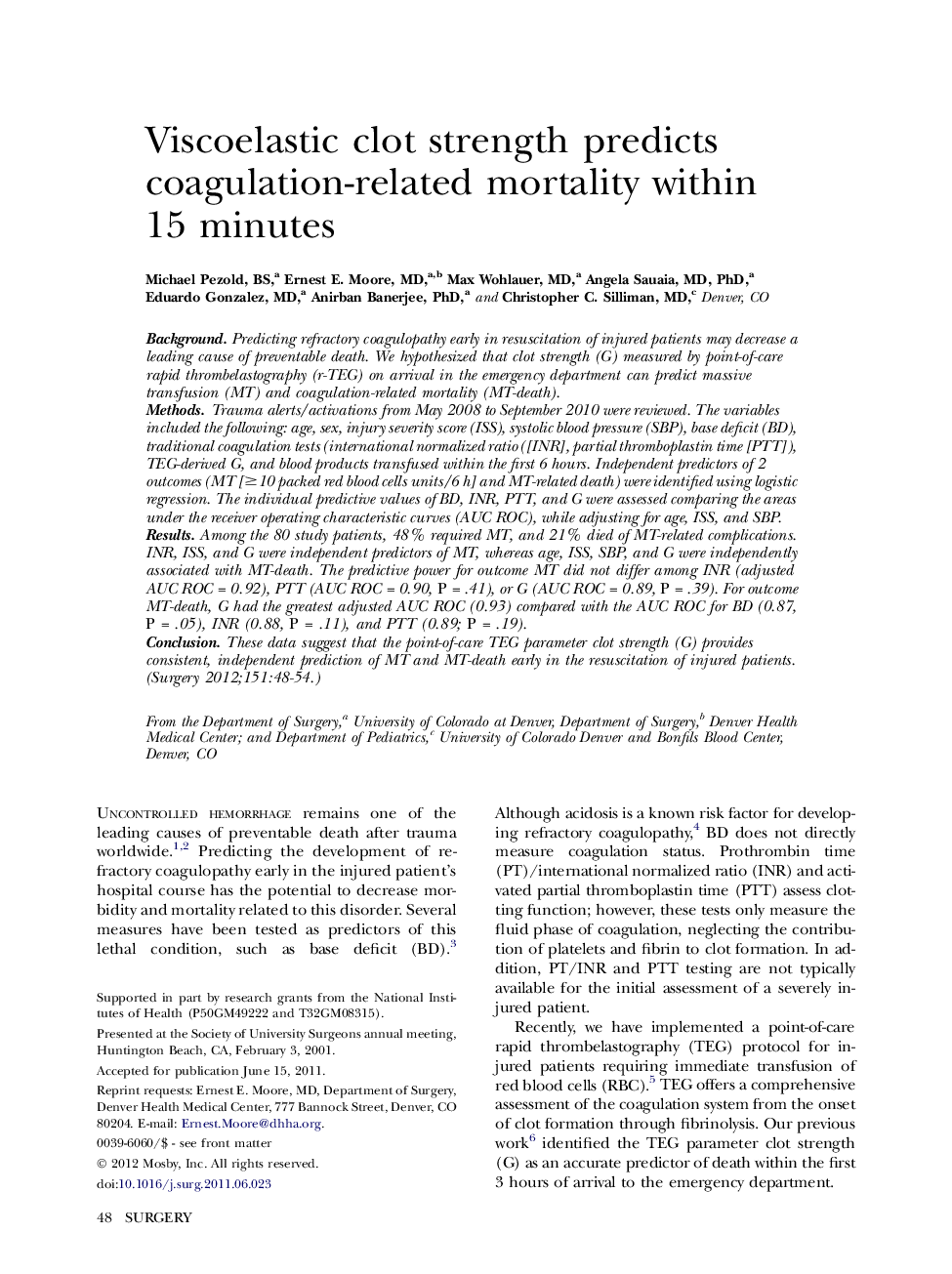| Article ID | Journal | Published Year | Pages | File Type |
|---|---|---|---|---|
| 4308641 | Surgery | 2012 | 7 Pages |
BackgroundPredicting refractory coagulopathy early in resuscitation of injured patients may decrease a leading cause of preventable death. We hypothesized that clot strength (G) measured by point-of-care rapid thrombelastography (r-TEG) on arrival in the emergency department can predict massive transfusion (MT) and coagulation-related mortality (MT-death).MethodsTrauma alerts/activations from May 2008 to September 2010 were reviewed. The variables included the following: age, sex, injury severity score (ISS), systolic blood pressure (SBP), base deficit (BD), traditional coagulation tests (international normalized ratio ([INR], partial thromboplastin time [PTT]), TEG-derived G, and blood products transfused within the first 6 hours. Independent predictors of 2 outcomes (MT [≥10 packed red blood cells units/6 h] and MT-related death) were identified using logistic regression. The individual predictive values of BD, INR, PTT, and G were assessed comparing the areas under the receiver operating characteristic curves (AUC ROC), while adjusting for age, ISS, and SBP.ResultsAmong the 80 study patients, 48% required MT, and 21% died of MT-related complications. INR, ISS, and G were independent predictors of MT, whereas age, ISS, SBP, and G were independently associated with MT-death. The predictive power for outcome MT did not differ among INR (adjusted AUC ROC = 0.92), PTT (AUC ROC = 0.90, P = .41), or G (AUC ROC = 0.89, P = .39). For outcome MT-death, G had the greatest adjusted AUC ROC (0.93) compared with the AUC ROC for BD (0.87, P = .05), INR (0.88, P = .11), and PTT (0.89; P = .19).ConclusionThese data suggest that the point-of-care TEG parameter clot strength (G) provides consistent, independent prediction of MT and MT-death early in the resuscitation of injured patients.
